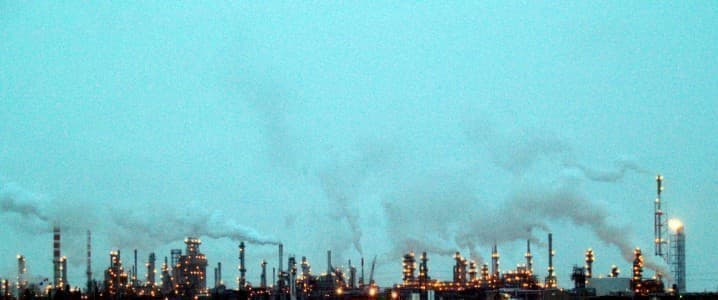As the world heats up, several countries experiencing greater wildfires. Last year, Canada battled record blazes and despite getting them under control, several fires continue to rage out of site. The so-called ‘zombie fires’ are hidden beneath layers of snow and continue to burn at an unprecedented rate, raising fears of what will happen when the snow subsides.
In 2023, Canada experienced a record year of wildfires that burnt through around 45.7 million acres of land, equivalent to around twice the land area of Portugal. Between spring and autumn, Canada experienced over 6,500 fires, with most being seen in the country’s boreal forests. Most of the fires ignited in remote areas, although residents in some regions were forced to flee their homes as blazes spread to some cities. While Canada has long experienced wildfires in its forests, the rate and size of those fires are increasing significantly. The Canadian wildfires gained international fame in June last year when the plumes of smoke travelled across the border to the U.S., where the skies of New York City turned orange.
Stephen Pyne, a fire historian at Arizona State University, explained, “It has been an exceptional, epic year. We are watching mythology become ecology – it’s a slow-motion Ragnarök. We’ve had ice ages in the past but we are now living through what I call the ‘pyrocene’. Imagine an ice age but instead of ice as a forming feature, we have fire.” Pyne added, “This is clearly a case of climate change adding energy to the system, magnifying the boom and bust of the boreal forest. We may be witnessing a change of state, a change in the character of this environment.”
Although the blazes subsided during the colder autumn months, they continue to pose a threat, with more severe fires expected this year. Around 50 zombie fires continue to burn near oil and gas wells and other production facilities, according to government data. These leftover fires burn into organic matter in the earth, such as peat, meaning they continue to smoulder and are difficult to extinguish. They pose the threat of disruption to oil and gas production, with Tourmaline Oil Corp., the country’s biggest gas driller, oil-sands giant Cenovus Energy Inc. and Paramount Resources Ltd. all at risk. Experts suggest that as much as three percent of Canada’s gas production could be under threat.
Despite being hidden, people in zombie fire areas can see and smell clouds of white smoke coming up from the ground. During snowstorms, the snow has been known to turn to a blueish-grey colour due to the smoke from the fires. This phenomenon is relatively common in British Columbia, which experiences around five or six zombie fires in the average winter. However, in January, the number of identified zombie fires in the province rose to 106. Alberta also had 57 zombie fires still burning in early February, which is almost 10 times more than the five-year average. Many subside before the spring, but those that remain could pose a threat when the seasons change.
More than 65 percent of Canada was deemed parched or in drought by the end of March, which suggests the possibility of even worse wildfires this summer. The country is also expected to experience higher-than-normal temperatures this year due to El Niño weather phenomenon. The first wildfire of 2024 was seen in Alberta in February, much earlier than those of previous years. There is significant potential for new wildfires to start in the hotter months, as well as for zombie fires to bounce back if they are not properly extinguished.
However, the government is hopeful that it can control the zombie fires as it has invested in identifying where these blazes remain. Josee St-Onge, a wildfire spokeswoman in Alberta, explained, “The advantage is we know them and we have been working on them for a year.” Meanwhile, several companies are rolling out comprehensive wildfire preparedness strategies this year, based on lessons learnt from previous wildfire seasons.
Last year, Westbrick was forced to shut in around 30,000 barrels of oil equivalent. However, as much of the vegetation that the fires burned through last year has gone, the company believes there is less of a threat of widespread fires this year. Chevron Corp., Canadian Natural Resources Ltd., and Baytex Energy Corp were also forced to shut in around a combined 300,000 bpd of oil as wildfires burned close to their infrastructure. In 2016, Canada was forced to halt production and shut-in over one million bpd due to huge blazes in Fort McMurray, near most of the country’s oil sands production sites.
The Canadian government has been tracking zombie fires across the country closely to mitigate the threat of these blazes spreading in the form of a wildfire in the summer months. Nevertheless, the government has registered far more zombie fires this year than in previous years, likely due to the sharp rise in wildfires in 2023, as well as the higher-than-normal temperatures the country has been experiencing, which does not bode well for the upcoming wildfire season.
By Felicity Bradstock for Oilprice.com
More Top Reads From Oilprice.com:
- Aluminum Prices Chase 2023 Highs
- China Dominates Global Hydropower Generation
- Transit Trade Growth Complicates Pollution Problem in Caucasus


















